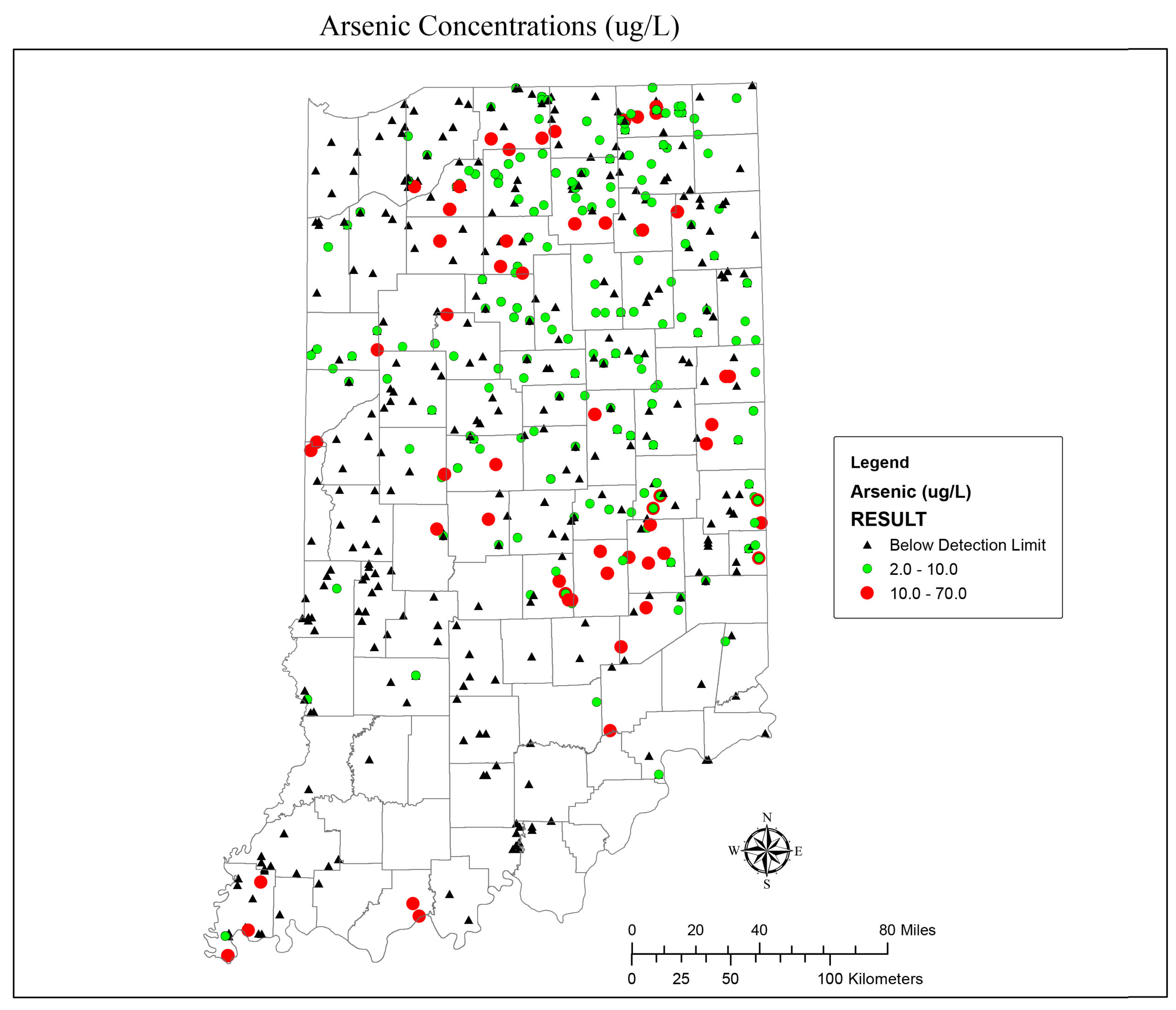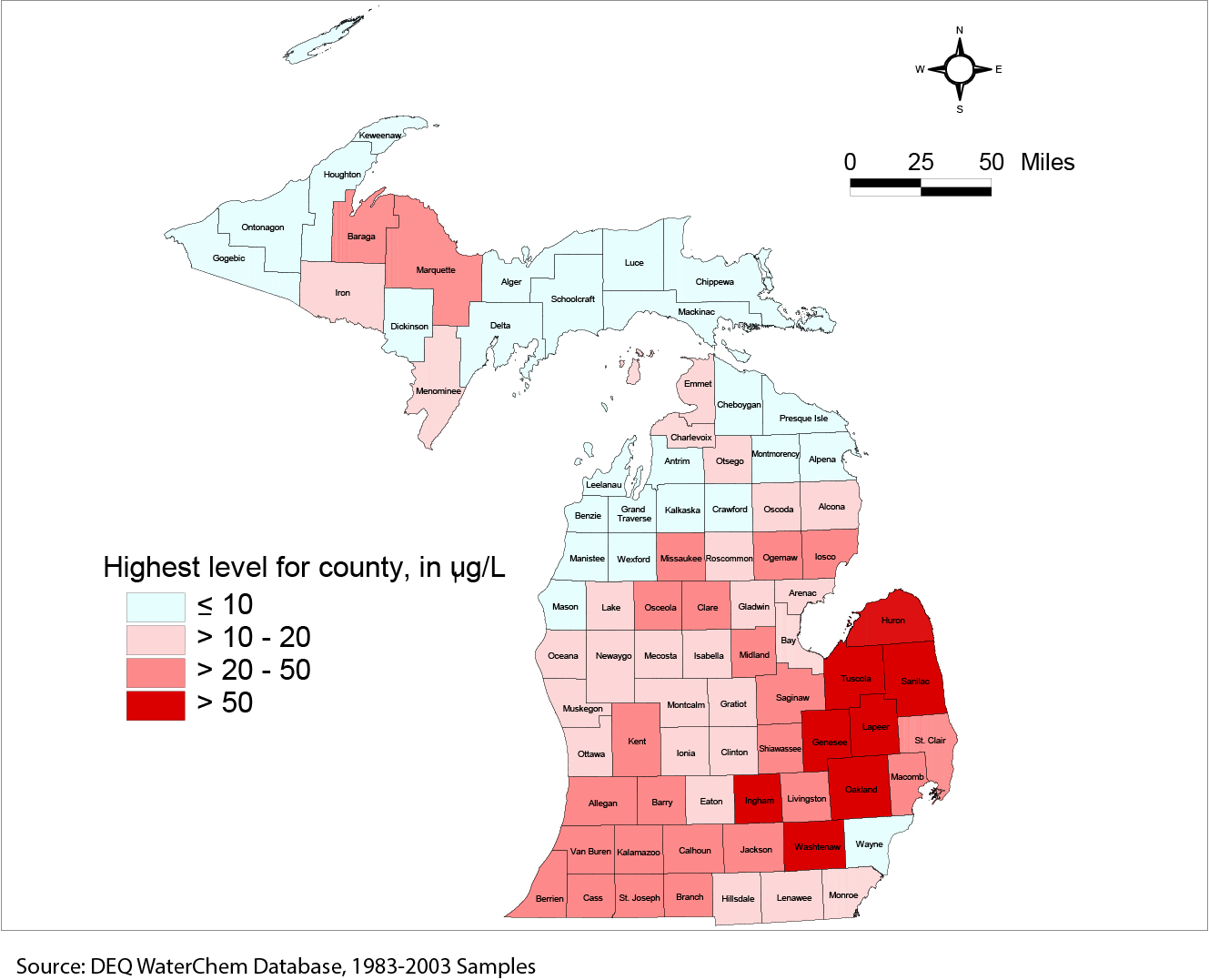What is arsenic?
Arsenic is another widely acknowledged water contaminant. It is a semi-metallic element that can be the result of both naturally occurring events, as well as man-made processes. It is odorless and tasteless, so spotting it in everyday consumption of water is not possible.
Arsenic is present in rocks and soils and can naturally contaminate water that comes in contact with groundwater. In addition, it is used for a variety of purposes for industry and agriculture. The element is often a byproduct of copper smelting, mining, and coal burning. Arsenic can combine with other elements to make wood preservatives and pesticides for insects, particularly on crops like cotton.
For more information about arsenic illnesses and treatment, please visit CDC-ATSDR’s arsenic page.
What are the dangers of Arsenic?
High-levels of exposure to arsenic pose potential health effects. Arsenic is know as a human carcinogen, or cancer-causing agent. It also has been linked to cases affecting the vascular system and has been associated with the development of diabetes.
While arsenic predominantly enters the human body through the mouth, according to the Centers for Disease Control and Prevention (CDC), inhaled arsenic also is absorbed through the lungs into the bloodstream. “Small amounts of arsenic may enter the body through the skin, but this is not usually an important consideration,” reads the CDC’s Public Health Statement on arsenic.
Where and how does arsenic get into drinking water?
As discussed before, the presence of arsenic in groundwater occurs through various natural and industrial events. These events impact the source of water that water wells draw off or effect the physical well itself.
According to the National Ground Water Association (NGWA), a primary source of arsenic to drinking water wells is from water flowing through arsenic-rich rocks and soil. It can be further released into the environment through natural activities such as volcanic action and forest fires, as well as through human actions. Arsenic is used in paints, dyes, metals, drugs, soaps, and semiconductors. Agricultural applications, mining, and smelting also contribute to arsenic releases in the environment. These can enter the groundwater system by gradually moving with the flow of groundwater from rains, melting of snow, etc.
Testing water for arsenic in areas where arsenic is a concern is an important strategy for private water well owners to safeguard the health and well-being of their family. Working with a water professional to monitor and maintain the quality of the well and water supply is an important responsibility of the private water system owner. Your groundwater contractor is your central source of information about caring for your system.

lndiana Arsenic Map

Michigan Arsenic Map
Is my private well at risk?
Exposure to arsenic in drinking water has been identified as a health concern in regions of the United States where bedrock contains unusually high levels of arsenic, such as areas of New Hampshire, Maine, Michigan, and regions in the Southwest and the Rockies. Your state’s Department of Natural Resources or Geological Survey Office may have information on any areas of your state that may be prone to the presence of high levels of arsenic.
According to a blogpost on the nytimes.com website from 2013: “While municipal water suppliers are required to meet the E.P.A.’s safety standard of 10 p.p.b. for arsenic in drinking water, no such regulation exists for private wells. Nationwide, researchers say, about 13 million people get drinking water from private wells with arsenic levels above the federal standard.
“...One study of private wells in Michigan, tainted with arsenic in the 10 to 100 p.p.b. range, found increased mortality rates linked to everything from diabetes to heart disease. Another focusing on cardiovascular disease in small communities is due to be published next week.”
How do I remove arsenic from my drinking water?
Heating or boiling your water will not remove arsenic. Because some of the water evaporates during the boiling process, the arsenic concentrations can actually increase slightly as the water is boiled. Additionally, chlorine (bleach) disinfection will not remove arsenic.
Utilizing water treatment methods, like those supplied by Wolverine Water Systems, such as reverse osmosis, ultra-filtration, distillation, or ion exchange. Wolverine’s solutions for arsenic treatment are superior to other treatment units that typically only treat water at only one faucet. Our solutions are custom-built, whole home solutions.
Sources: wellowner.org, The National Ground Water Association (NGWA); Centers for Disease Control and Prevention (CDC)
https://www.cdc.gov/healthywater/drinking/private/wells/disease/arsenic.html

